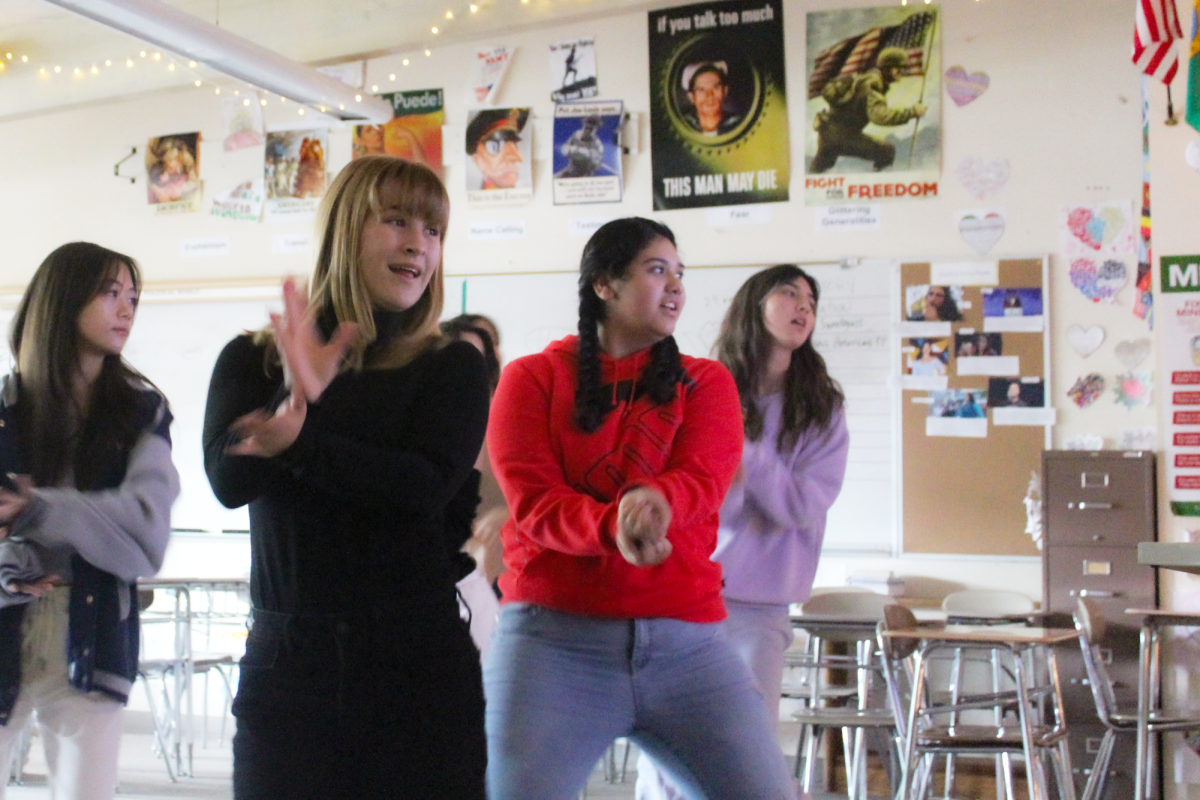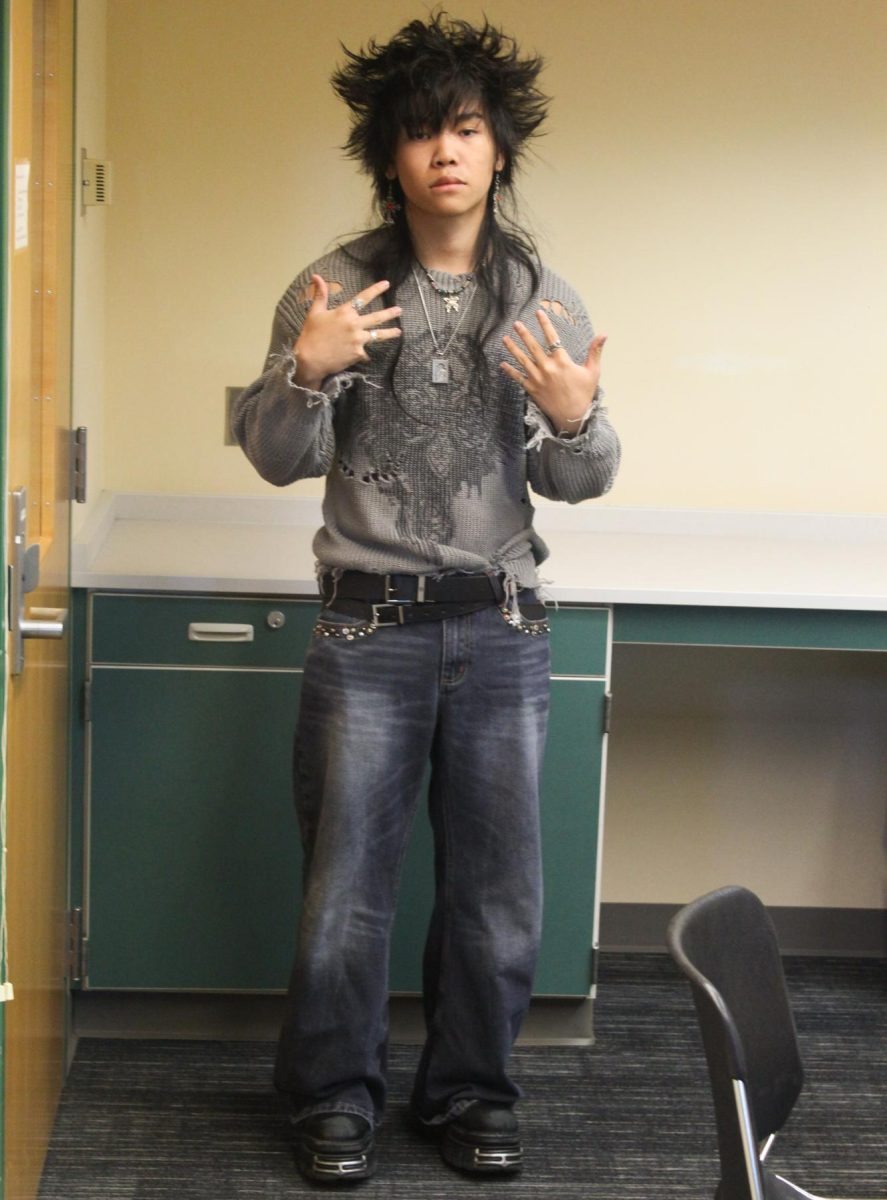With Spotify reporting over 16.5 billion streams of the top 10 K-pop artists alone just last year, it’s safe to say that K-pop has exploded in popularity across the globe. Originating from South Korea, K-pop draws inspiration from pop, electronic, experimental, hip-hop and R&B.
When a K-pop album is released, it’s called a “comeback.” Comebacks usually include several songs, with a lead track called a “title track.” The title track usually gets the most promotion, and has its own music video. The other songs are called “b-sides.” Many K-pop comebacks are sold with CDs, photobooks and photocards, which are often traded or collected.
The Hallyu Wave, a cultural movement involving the globalization of South Korean media, made K-pop more widespread than ever. However, the movement also generated negative attention. K-pop club president, junior El Larson (she/they), said the negative response has been a problem for the club in the past.
“As a club, I know that we’ve been made fun of a lot when we advertise for the club. A lot more people make fun than are interested,” Larson said.
Club member and sophomore Emma Chadwick (she/her) said she had a negative experience with her family, who initially didn’t understand why she liked K-pop. She said the confusion around K-pop could be due to cultural differences, as there isn’t as much obsession over western celebrities as there is within K-pop.
“I would say K-pop is such a unique genre,” Chadwick said. “There’s so much more to it than it looks like, so you just can’t really judge a book by its cover.”
Sophomore Janelie Gallegos Campos (she/her) said the stigma surrounding K-pop was something she worried about before joining the club.
“I was scared of telling people I liked K-pop because most people would be like, ‘That’s girly’ or ‘What do you see in them?’” Campos said. “I like how I found a safe place, because I know that these girls won’t judge me.”
Campos said the meaning behind K-pop songs make her passionate about the genre.
“Their music spreads messages, and it’s like any other bands in the United States. They talk about the same thing, but they talk about it a lot more meaningful and deeper,” Campos said.
K-pop club meets every Monday after school to chat and dance to K-pop music videos.
“If we have a dance picked out, which we normally do, we start practicing our dance,” Larson said. “But that’s kind of what we do the whole time. And then we build up to doing a performance, but we don’t have anything scheduled yet, unfortunately.”
Larson said the club is currently practicing the song “Nonstop” by the girl group OH MY GIRL. They also listen and dance to other songs by watching relay dance videos, which usually cycle through the chorus of popular K-pop releases at the time the video was posted. Larson said “Baddie” by IVE is a recent release that they love, as it came up during one of their relay dance sessions.
Larson said a good first song for someone who wants to start listening to K-pop depends on the person. Chadwick said she recommends starting with BTS, who have many songs in English, though they aren’t the only groups with English songs. Larson recommended the girl group XG.
“I would recommend a BTS song first. I feel like that’s the base of K-pop,” Chadwick said. “I would just go with their old songs, like ‘Like’ by BTS.”
Campos also recommended older songs from the group ITZY, who released popular title tracks such as “WANNABE,” “LOCO,” “Cheshire” and “In the Morning.” All their recommendations as well as some other songs are available with the Spotify code above. It’s important to understand that all music is subjective, and with the expansive range of songs within the umbrella term of K-pop, there’s likely a song for everyone to enjoy, whether it’s in Korean, English or even another language. Larson emphasized that K-pop club is a safe space for anyone who wants to have fun.
“We’re not crazy,” Larson said. “We’re just normal people who just like music in a different language.”











